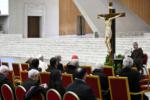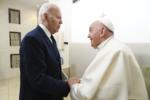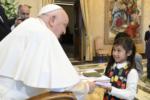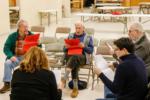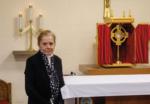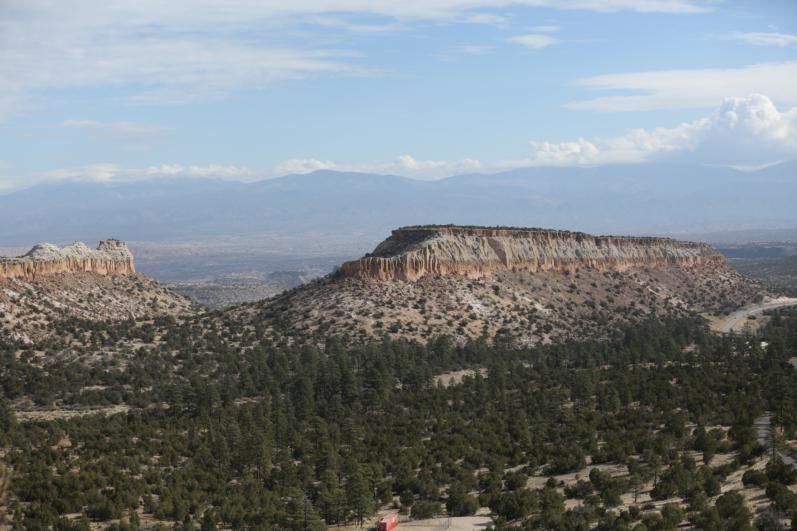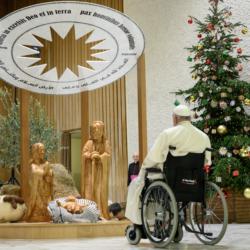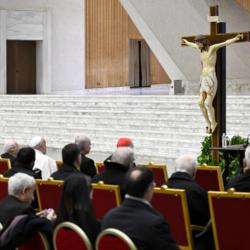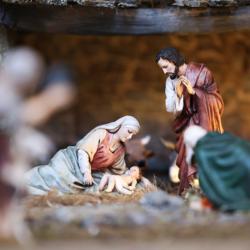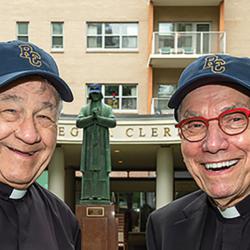US Catholic dioceses are leading the 'green revolution' championed by popes
(OSV News) -- Many Catholics, increasingly aware of the environmental impact of fossil fuels, are at the forefront of a "green revolution," heeding the call of several popes to explore and implement alternatives.
As the 2023 Season of Creation (Sept. 1-Oct. 4) begins, OSV News discovered what some Catholic dioceses and organizations are doing to become better caretakers of the earth.In the Diocese of Brooklyn, New York, the Laudato Si Corporation -- a green energy initiative to generate renewable energy, managed by Catholic Charities of Brooklyn and Queens' Progress of Peoples Development Corporation -- is quite obviously inspired by Pope Francis' landmark 2015 ecological encyclical, "Laudato Si'."
"The goal at the beginning was to leverage our work developing affordable housing -- for more than 50 years, at that point -- with sustainable development," David Downs, a vice president at Catholic Charities and director of the Laudato Si Corporation, told OSV News.
The corporation worked with a variety of different partners to assess the viability of installing solar panels on the rooftops of 30 Catholic Charities-owned residential buildings in Brooklyn and Queens, New York. The assessment narrowed to about five properties and launched with a test pilot project.
The first installation took place in June 2021.
"We would love to do this on every building where it makes financial sense," Downs said. "The goal is to get it to a place where we have no work left to do."
Some buildings may not qualify, such as those nearing the end of their life spans or restricted by local covenants. But solar-equipped buildings can generate income to invest in other projects. Some of the energy produced is kept; some goes to the power grid; and some is returned to residents in the form of adjusted bills.
Battery storage of power also is being explored.
"We are certainly excited to try to incorporate this into all of our existing buildings, as well as when we build new," Downs said. "All of our new buildings have solar from the beginning at this point."
The Department of Energy website reports there are over 1 million solar installations across the U.S., and that "the solar resource of the United States is enormous ... just one hour of noontime summer sun is equal to the annual U.S. electricity demand."
As the department also notes, solar panels can reduce electrical bills, potentially increase property resale value and decrease carbon footprints.
On the 1990 World Day of Peace, St. John Paul II cautioned, "Industrial waste, the burning of fossil fuels, unrestricted deforestation ... all of these are known to harm the atmosphere and environment."
Pope Benedict XVI, often dubbed "the Green Pope," in 2008 oversaw the installation of 2,400 solar panels on the roof of the Paul VI Audience Hall.
Advocating for the switch to cleaner energy at a June 2018 Pontifical Academy of Sciences conference, Pope Francis urged, "we need to talk together -- industry, investors, researchers and consumers -- about transition and the search for alternatives. Civilization requires energy, but energy must not destroy civilization!"
In 2020, the Vatican committed to achieving its own net-zero carbon emissions by 2050.
As of May 2022, only about two dozen U.S. Catholic dioceses -- out of 194 territorial archdioceses and dioceses, the U.S. Archdiocese for the Military Services and the Personal Ordinariate of the Chair of St. Peter -- had expressed a commitment to the Vatican's multiyear, churchwide Laudato Si' Action Platform, according to the National Catholic Reporter.
But in the Diocese of Arlington, Virginia, a thriving community of almost 450,000 Catholics in 70 parishes, care for creation is very much a priority of Bishop Michael F. Burbidge.
"We know this is a major emphasis of our Holy Father, Pope Francis, reminding us that we all, as children of God, are stewards of creation -- and we must have a common care; care for our common home, and be united in that," said Bishop Burbidge in the Aug. 23 edition of his "Walk Humbly" podcast.
"In our diocese, we want to have the message of ‘Laudato Si'’ in front of us -- and we're doing some great work. Currently, our diocese has four parishes with operational solar rooftops," Bishop Burbidge shared.
Five new solar panel projects are planned for a diocesan high school, two parish schools, a church and a retreat center.
"Our diocese has also currently signed five power purchase agreements -- meaning a joint contract to collective bargain on energy pricing, which will be solar if the feasibility study is successful," he said. "The savings will be significant."
Bishop Burbidge added, "The diocese has supported numerous parishes with energy-saving facility projects across Northern Virginia. And our office for parish construction is also doing audits: how can we be more conservative in our use of energy; how can we take good care of the environment, and even save some funds along the way?"
Across the Potomac River in Washington, the mission of Catholic Energies, launched in 2016, is apparent from its name. A program of the Catholic Climate Covenant -- a nonprofit formed with the help of the U.S. Conference of Catholic Bishops that, with 20 national partners, guides the U.S. church's response to climate change -- Catholic Energies and its partner Mission Energy began with simple energy efficiency projects.
Dan Misleh, the covenant's founding executive director and visionary behind Catholic Energies, told OSV News he knew that "if we could help Catholics facilities reduce their energy cost, then we would have their attention."
A strategic adjustment was soon required.
"We started with energy efficiency, thinking that that would be the road to making this happen," Misleh recalled. "But a lot of Catholic institutions were asking for solar ... so we just sort of shifted over to what the market was demanding."
Dan Last, CEO of Mission Energy, told OSV News he found their joint customers were positively zealous. He said the initiative has since grown to 40 projects in 14 states and Puerto Rico. Misleh added that current ventures include the Diocese of San Diego, the Archdiocese of St. Paul and Minneapolis and the Diocese of Davenport, Iowa.
"Solar was, 'We want to do this. This is a thing that we are committed to doing,'" Last recalled. "It was just a different mindset."
Longevity and return on investment is an obvious attraction.
"Solar is there. It's there for 30 years; 40 years; or longer," Last explained. "It's going to continue to provide benefits. It's going to continue to insulate these organizations from price shocks, as we saw after the (Ukraine) war began last year, and some of the uptick in pricing all over the country."
Saving both money and the planet are major plusses -- but Misleh identified an evangelical reason, too.
"This is what young people are looking for. They want to see their Catholic Church demonstrating that they are concerned about their future," said Misleh. "If we want to retain or draw back young people into our faith, this should be one of the things that we ought to focus on."
And for those still hesitating to "go green," Last has a final word of encouraging advice: "It's easier than you think it is."- - - Kimberley Heatherington writes for OSV News from Virginia.

